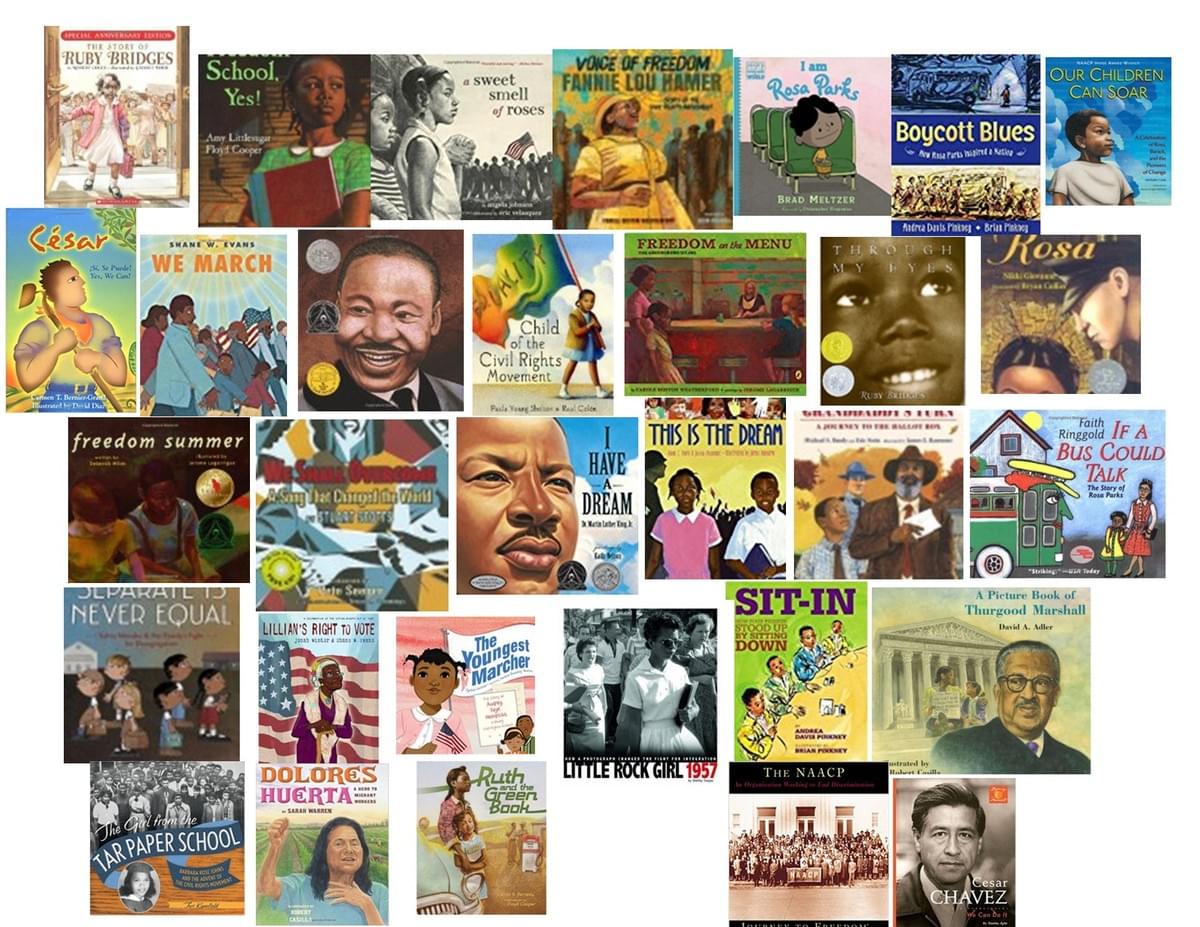I'm pinning this post for teachers for Martin Luther King Jr. Day. Readers Theater (RT) and picture books are a great way for students of all reading levels to build background knowledge of events and leaders of the Civil Rights movement of the 1950s and 60s.
I discovered Dramatizing the Content with Curriculum Based Readers Theater, or CBRT, by Rosalind Flynn and modified for 8th grade her CBRT method to teach the standards on Civil Rights.
My 8th grade students loved using picture books to build background knowledge about Civil Rights events, leaders and topics. Many of them hadn't picked up a picture book in years, so it was a novel, quick way to learn about key Civil Rights personalities and events. It also had the added benefit of making the content accessible for readers of all levels to explore.
To model the product I expected, students read Freedom on the Menu, which has a wonderful readers theater script.
In addition, Flynn's book offers script templates, which can be photocopied and provided to students who suffer from "writer's block" or act as scaffolding for students who struggle with writing. They allow you to model a product and differentiate your instruction, depending on the needs of your students.
Lesson Plan:
1. Build background knowledge. Introduce students to the picture books on the list. Have students read and explore them in table groups of four or five. You can buy the books, or arrange with your school librarian to have the titles available for a library visit by your classroom. When they're finished reading several, have them swap with others.

I also offer a written list you can download, as my library doesn't have all the books pictured here.

For even more books to choose from, there is an awesome list of PBs, chapter books, middle grade and YA books at Social Justice Books: Civil Rights Teaching: Children's and Young Adult titles.
2. Establish expectations. Introduce the research project and your expectations. Explain to students, they'll be writing a short script, not a research paper, about the event or person they choose to research, and doing a Reader's Theater reading for the class about that person or event.
3. Model. As a class, read the Readers Theater script, Freedom on the Menu, using the background pictures referenced in the script.
4. Students then sign up to research a topic, person or event and turn it into a script.
5. Independent practice. Students research their topics independently, for homework. Students write scripts independently.
Scaffolding. Use Flynn's CBRT script templates to help students get started writing, or as scaffolding, if needed. Provide a day or two in class to write, so students can share scripts, get peer feedback, and compare scripts.
Give students ample time independently (a week) to finish writing and turn in scripts.
6. Feedback: TW read scripts, making suggestions for rewrites. Arrange for at least one peer reading of each script, so peers can provide critique, as well.
7. Presentations: Preparation. Once rewrites are complete, students work in groups to rehearse and perform scripts. Further revision is encouraged during this step! Often students will realize, they left out a line, or a speaker. Encourage them to add, and submit an edited copy for final grading.
7. Evaluation: Distribute the rubric for student performances in advance, so students know the expectations of their performances in class. Students perform RTs in class. Non-participating students take notes on the content of each reading.


